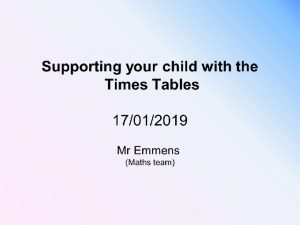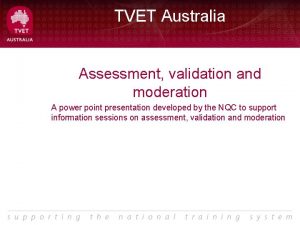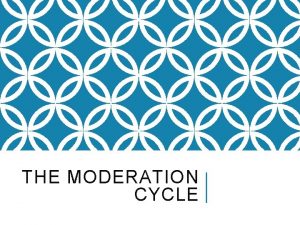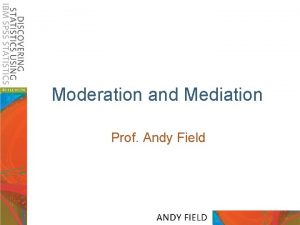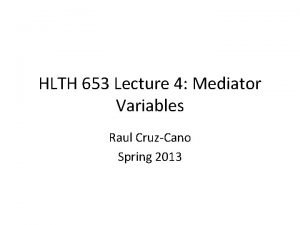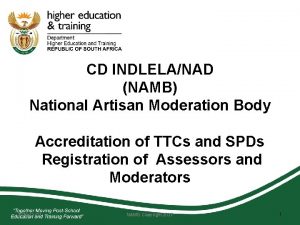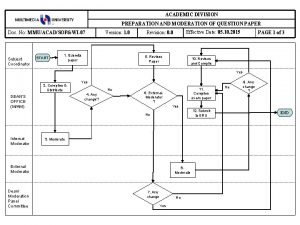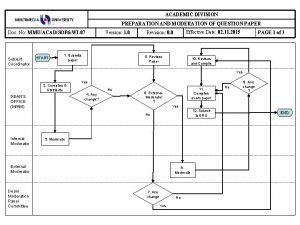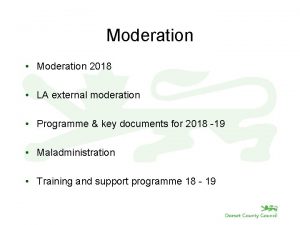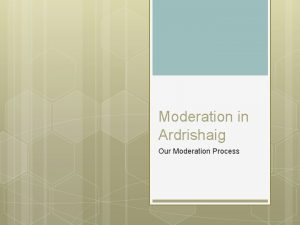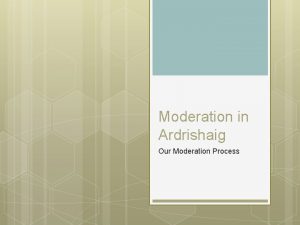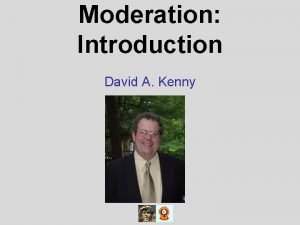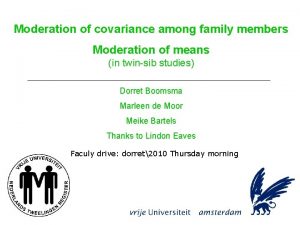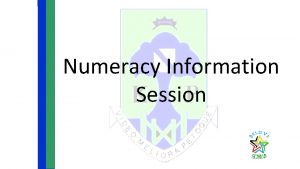Moderation process 2011 2012 Session 1 Aims of











- Slides: 11

Moderation process 2011 -2012 Session 1

Aims of the session • To moderate Autumn observations with other colleagues for security of judgements • To use the data to inform planning for priorities, practice and provision needs • To increase understanding of progress across EYFSP

Attainment on Entry How do we ensure a secure baseline? • Transition arrangements from nursery/settings • Practitioner understanding and use of information from previous settings • Use of observational assessments to secure judgements no later than the end of the 1 st half term

Using previous EYFS assessments • Translation document • Age related expectation • Progress expected

Current Age related advice • Attainment on entry to reception at age four: most children are likely to demonstrate some of the elements of skill, knowledge and understanding within the development matters band for 40– 60+ months, in addition to all of the elements in the preceding band for 30– 50 months. This may be referred to as the age -related expectation at the beginning of reception. • Attainment on entry is likely to be below age-related expectations where a substantial proportion of children in a school has not demonstrated all of the elements in the 30– 50 month band. ‘Most’ means the majority or nearly all children. Ofsted’s definition of ‘most’ is 80%– 96%. ‘Substantial proportion’ means more than the 20 per cent that might be outside the definition of ‘most’.

Progress in EYFS Depends on a child’s starting point

What to do next with the baseline • Look at the information for cohort priority needs. (Any strands lower/higher) • Use the summary to identify higher and lower achievers

Class Teacher Pupils working within 40 to 60 months scoring 39+ points How will these pupils be challenged and extended ? A g e r e l a t e d Pupils working towards GLD (26+ and 2+ in all 7 strands of PSE and CLL) PSED DA Pupils scoring 26+ but not 2+ in all strands. Pupils scoring below 26 points. Pupils scoring 0 in identified strands. SD CLL ED LCT LSL PRSN RE WR NLC Cal KUW SSM PD CD

Task 1 • Use the paper tracker to plot the 3 children • Use tracker to inform which children are working at Age related expectation/ below/above

Task 2 • Choose 6 Observations on your table and Label A to F • Use EYFSP handbook to moderate each child’s observations in pairs • Record evidence agreed on EYFSP grids • Feedback from groups

Prepare to bring to next session • Summative printout for Autumn 2 • Observations for the same 3 children for KUW and PSED (including an extended observation) • Completed attainment end of Autumn term. On BSO.
